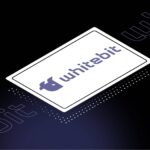In this review, we will look at Drops, an instant loans market for Jpegs, NFTs, DeFi assets, and the metaverse. In particular, we will focus on the platform’s key features, such as its collateral, lending pools, native token, and security, among other things.
About Drops
Drops is a platform that offers loans for non-fungible tokens (NFTs) and decentralized finance (DeFi) assets, unlocking the additional value with idle assets as well as bringing scalability and utility to NFTs.
Using Drops decentralized autonomous organization (DAO), clients may utilize any asset to build a lending pool in an unrestricted way, without the need for approval. Through the protocol, users may take advantage of their idle DeFi tokens and NFTs to secure trustless loans and earn additional yield by leveraging their assets.

In general, the community-driven protocol, which became operational on July 14, 2021, allows any form of asset to be utilized as collateral, ranging from metaverse objects to financial NFTs and DeFi tokens.
Thus far, over $7 million has been loaned in the market using the protocols permissionless loans platform created by the developers of the NFT game Node Runners and founded by Darius Kazlovskis.
Users of the protocol can benefit from the following features:
- Leveraging idle NFTs and DeFi tokens to obtain loans as well as earn extra yield.
- Take advantage of the Drops protocol lending pools to allow any sort of NFT to be used as collateral.
- The Drops DAO protocol has its own native governance token for the Drops ecosystem, the Drops Ownership Power (DOP) token allows users to vote on the collection and distribution of DOP as a hybrid governance model.
Why do crypto borrowers use Drops?
Given that DeFi, NFTs, and the metaverse are currently three of the most talked-about applications based on blockchain technology, Drops has emerged, creating a community and infrastructure around NFT loans.
Drops allows NFT owners to find a new financial utility to their digital collectibles illustrating how they may be used to promote the expansion of DeFi in the future.
To accomplish this, Drops seeks to combine features such as liquidity tokens, staking, and yield farming in order to establish unique decentralized finance in which NFTs play a significant role. Drops protocol is built on the second-layer scaling solution Polygon and is designed specifically for NFT assets.
Note: The platform’s concept is to leverage NFTs to produce more value in the same manner as DeFi tokens do, either via yield or collateral. Since NFTs are developing to include new value-adding use cases, such as lending and borrowing, as well as functioning as collaterals.
Drops plans to accept governance tokens from major NFT projects as collateral in the future, but for now, we’ve listed some of the advantages of the Drops NFT loans:
- As a pioneer in the specialized sector, Drops NFT provides financing services to NFT owners and investors in the form of vaults, staking, yield farming;
- The platforms aims to widen the audience for creators and owners of digital assets, as well as increase the monetary worth of the NFTs they own;
- Users may provide liquidity via the use of supported tokens in exchange for a variable rate of return, as well as borrow through over-collateralized loans;
- Drops is a permissionless loans platform for NFT assets that enables any NFT collection to have its own lending pool;
- Users can supply non-fungible tokens to the pool as collateral and obtain instant loans since there is no matching with the lender as an NFT oracle determines the floor value.
Since the platform’s launch, it has also hit the following milestones:
- 2.5 million in Total value locked (TVL);
- Launched a fungible loans Mainnet;
- Received backing from a large number of commercial and private investors;
- Established partnerships with multiple leading blockchain organizations such as Polygon and Enjin;
- Launched an NFT Loans Testnet.
Drops key products
In general, Drops has four core products to offer a new means of financial utility for NFTs:
- Use NFTs for loans;
- Turn assets into active yield;
- Borrow against DeFi and NFT tokens;
- DOP Token and Governance.
1. Use NFTs for loans
Drops’ permissionless NFT Lending Pools allow you to put your NFTs down as collateral and obtain instant access to a trustless loan without having to deal with a lender or wait for approval, allowing you to get started right away.
2. Turn assets into active yield
With Drops, you can leverage your idle assets by lending stable coins and governance tokens to fungible or NFT lending pools for rewarding yields.
Furthermore, users may earn money even while their collection isn’t on show on top of improving their cash flow by taking out quick loans.

3. Borrow against DeFi and NFT tokens
To mitigate the opportunity cost associated with holding governance or liquidity tokens, Drops supplies them as collateral for short-term loans, generating substantial returns and rewards as a result.
In addition, using any compatible NFT as collateral, users may borrow up to 80% of the value of their asset, as determined by the floor price.
Using the borrowing function in the protocol has the potential to result in collateral liquidation; however, users are informed of the collateral ratios and restrictions, which must be followed in order to keep the collateral from being liquidated.
4. DOP Token and Governance
Drops Ownership Power (DOP) token will help direct the future of the Drops platform. The token had its initial DEX offering (IDO) on Polkastarter and is now listed on leading cryptocurrency trading platforms Uniswap, MEXC Global, and Gate.io.
The DOP tokens are employed in order to manage the loan procedure and set price ranges for NFTs acceptable for the Margin NFTs solution.

Given the difficulty of implementing the protocol as a whole, on-chain voting is divided into two categories:
Drops Ownership Power (DOP) token
The governance token for Drops DAO, DOP has the authority to allocate liquidity incentives across lending pools and to make decisions on the future of the protocol.
Presently, DOP is used primarily for two purposes: voting and staking. Users must lock DOP and obtain vote-escrowed DOP (veDOP) in order to be able to engage in voting and staking processes.
Vote-escrow DOP (veDOP)
Vote-escrow DOP is a non-transferable token that can only be obtained through locking DOP. When the lock is activated, an NFT is created that reflects the veDOP position. veDOP is simply DOP locked for a period of time, and the longer the user locks DOP for, the more veDOP is received.
The duration of the lock-up is determined by the user, with the maximum being up to 4 years. One veDOP is provided for 1 DOP that has been locked for four years.
Note: It is worth mentioning that a total of 2,420,000 DOP tokens (16.1% supply) will be distributed throughout asset markets as liquidity incentives over a five-year period.
How do Drops NFT loans work?
All in all, there are four steps involved when it comes to how Drops NFT loans work:
- Select lending pool: Select an existing lending pool that will accept your NFT as collateral.
- Supply NFTs as collateral: The value of the collateral is established by the NFT Floor Time Weighted Average Price (TWAP) oracle.
- Borrow against NFTs: Up to 30% of the NFT collateral may be borrowed instantly by users.
- Manage your credit: Users must not exceed their borrowing limit in order to prevent NFT liquidation.

Users must first pick whether to join an existing pool or build their own; next, they must decide whether to lend by providing liquidity or borrow using their NFT as collateral to secure a loan, as detailed below.
- Create or join lending pools: Drops users can join an existing lending pool that matches their requirements, or they can create their own by deciding which NFTs to accept and how much they’re willing to lend against them.
- Lend: Those that use the protocol and provide liquidity to a lending pool of their choice may earn a handsome return on their crypto and NFT assets.
- Borrow: Users may use any compatible NFT as collateral to borrow up to 80% of the asset’s value, they may also get a quick permissionless loan from the Drops pool with up to 30% of the NFTs collateral borrowed instantly.
Drops fees
Apart from the blockchain transaction fees for the network you are using, engaging with the Drops Loans protocol is completely free.
Drops provides gasless transactions and a seamless user experience via the use of the Layer-2 platform Polygon and a partnership with Biconomy, allowing for equitable involvement for all participants in the ecosystem.
NFT price oracle
In order for permissionless loans to function properly on Drops, an NFT price oracle must be used to calculate the value of NFTs.
To begin with, the value of delivered NFTs will be determined by the collection’s floor price – sometimes also referred to as “price floor” as a starting point meaning the lowest price, rather than the average price, at which an NFT can be bought. Later on, premiums depending on rare characteristics will be introduced in the future.
The NFT floor price oracle is based on the Chainlink infrastructure, allowing anyone to become a node operator.
The floor price is calculated in four steps:
1. Verifying sale;
2. Extreme outliers removal;
3. Probable outliers removal;
4. Floor and 24-hour TWAP.
Drops depositing and earning
Deposit on Drops
Go to https://drops.co/loans/ and connect to the Drops Loans dApp using your wallet to make a deposit. Choose the asset you intend to deposit from the’ Supply’ column and then click on it.

You will be able to see your deposit on the dashboard after the transaction has been confirmed on the blockchain, and it will instantly start earning interest.
There are also no limits on the amount of an asset that may be placed into the protocol, either in terms of minimum or maximum quantities.
Earning interest on Drops
For the length of the time the protocol is staked, depositors in Drops Loans will automatically get a variable interest rate return on their assets. Both supply and demand have an influence on this interest rate, which is calculated using an algorithm.
In the ‘Supply‘ column of the dashboard, you can view the current rate of return that a certain asset is paying.
Withdraw on Drops
In order to withdraw your deposited funds, click on the asset in the ‘Supply‘ column and then pick the ‘Withdraw‘ option from the tab. After that, you may input the amount of the asset that you desire to withdraw and confirm the transaction.

Additionally, you may claim your accumulated DOP by clicking on the ‘Claim X DOP‘ button in the pop-up window and signing the transaction.
If, on the other hand, you no longer want a certain asset to be used as collateral, you can simply locate the item in the ‘Supply‘ column and flip the collateral switch to the ‘off‘ position. In the pop-up box that appears, choose ‘Exit Market‘ to complete the transaction.
Drops Lending Pools
The Drops lending strategy is based on lending pools, which include assets that can be used as collateral and tokens that may be borrowed.
As soon as a user provides assets, the NFT price oracle determines the collateral value, and depending on the asset type; the user may be able to borrow up to 50% of its worth.
Lenders may pick which specific NFT collections they wish to be exposed to by employing isolated pools, which allows them to manage risk better.

Loans have no expiration dates and may continue to be solvent as long as the user does not borrow more than the loan’s maximum amount. Using the asset’s utilization rate as a starting point, an algorithm is used to determine interest rates.
Drops dTokens
Drops offers dTokens in return for fungible assets that the user supplies. At any time, dTokens’ underlying assets may be redeemed for the ERC20 tokens they represent.
dTokens may be redeemed at an exchange rate (in relation to the underlying asset) depending on the interest received on the underlying asset as time passes.
Drops dNFTs
As compensation for supplying NFTs, Drops provides customers with dNFTs in return, which are ERC721 tokens that may be exchanged at any moment for the underlying assets they represent. dNFTs, in comparison with dTokens, bear no interest and may only be used as collateral.
Liquidations on Drops
Liquidations on Drops Loans guarantee that a loan may be repaid in all situations, even in a high-risk position, by selling the collateral used as security.
Whenever a borrower’s debt is liquidated, a percentage of the debt is returned, and a liquidation charge is added to the total amount of debt that has been paid off.
Drops also has a liquidation penalty which may be updated via DOP governance at any time.

Is Drops safe?
The Drops team has vast experience in both product development and marketing, with the majority of the team working in the cryptocurrency space since early 2017, with skills in both blockchain and non-crypto software development.
Furthermore, the platform has been growing in credibility thanks to the backing of key market players, such as Polygon, Enjin, Attrace, and Bridge. Drops has also seen investment from large-scale investors such as Maxim Blagov, the CEO of Enjin, and Joseph Delong, CTO of SushiSwap.
With that being said, the Drops Loans protocol, like any decentralized protocol, has inherent risks. This covers the risk of a bug in the protocol code affecting smart contracts, however, Drops takes the necessary measures to prevent this, such as undertaking third-party audits to mitigate this risk. For instance, the Drops protocol completed a smart contracts audit report [PDF] with PeckShield in order to reduce the likelihood of a bug.
Users must also be aware there is also a risk of collateral liquidation when utilizing the protocol’s borrowing function; nevertheless, users are given clear collateral ratios and limits that must be followed to prevent collateral liquidation.
Customer support
The Drops DAO team have social media channels that can be used to find out information on:
Additionally, the Drops DAO official blog on Medium is a useful source for tutorials and updates.
Pros & Cons

Pros
- Gasless transactions as Drops charges no fees;
- Audited platform with PeckShield;
- Holders can utilize NFTs, obtain trustless loans and earn yield;
- Drops integrates NFTs and DeFi, creating a platform that focuses on NFT assets and their use;
- Any NFT can be used as collateral.

Cons
- Drops, like other DeFi protocols, presents risks such as a protocol bug.
Final thoughts
As NFTs continue to revolutionize the management of digital assets, Drops has emerged as a leader in the industry, providing a novel manner of storing NFTs while collecting yields. For aspiring digital artists and designers, the platform serves as a springboard for the launch of their respective careers.
All in all, Drops is aimed at the NFT market that wishes to lower their opportunity costs of owning NFTs while also having the ability to get liquidity without selling their assets.
FAQs about Drops
What is Drops?
Drops is a pioneer in providing loans, vaults, staking, and yield farming for NFT owners and investors supplying them with much-needed utility. Users can use their idle NFTs to obtain loans and earn yield in doing so, reducing the opportunity cost of holding NFTs long-term.
What are the fees to use Drops?
The Drops Loans protocol has no additional costs other than the blockchain transaction fees charged by the network you are using to interact with it.
Is Drops safe?
Drops Loans is fully audited, having completed a smart contracts security audit with PeckShield. The platform is also backed by investments from some of the biggest names in the cryptocurrency space.
What is the DOP token?
Drops Ownership Power (DOP) token is at the heart of the whole NFT loan ecosystem; it is the utility token used to govern the main characteristics of the Drops platform, such as the lending protocol and fractionalization pools.
![Drops Review [2022] | NFTs-backed Loans & Staking | Pros, Cons](https://assets.finbold.com/uploads/2022/02/Drops-Review-2022-NFTs-backed-Loans-Staking-Pros-Cons-2-1024x684.jpg)



